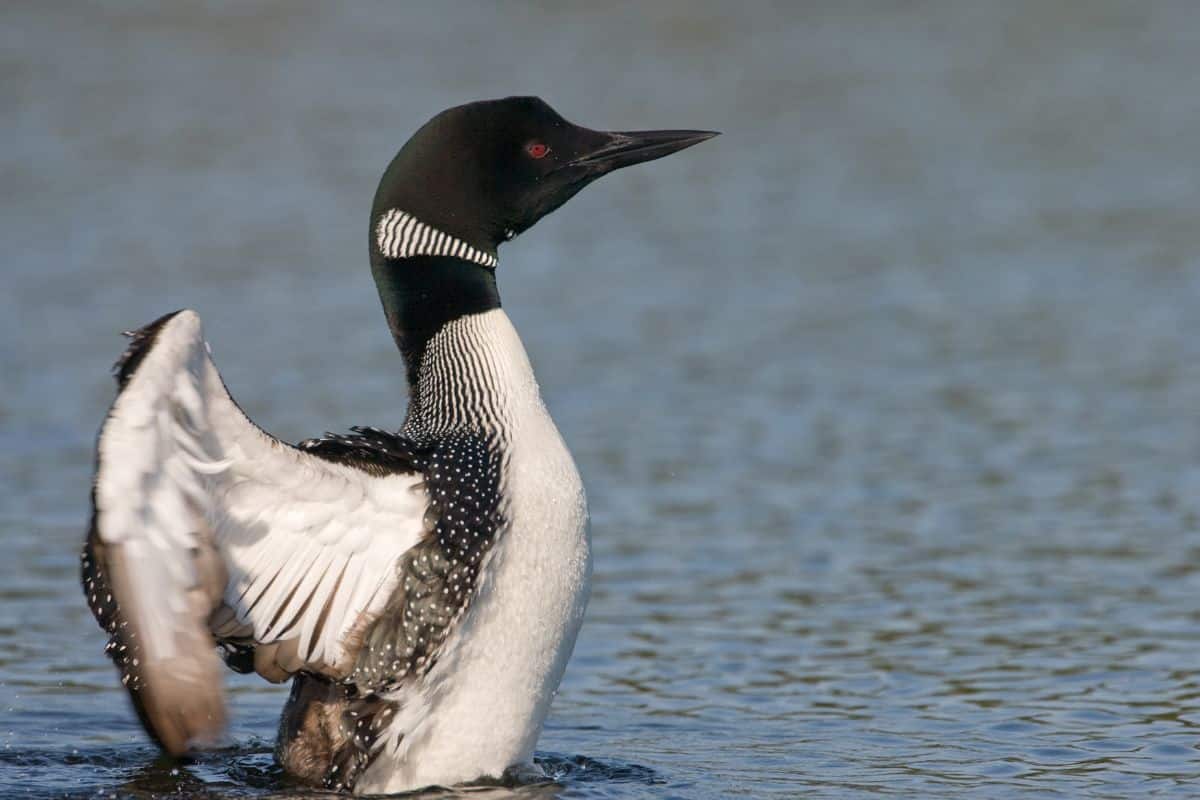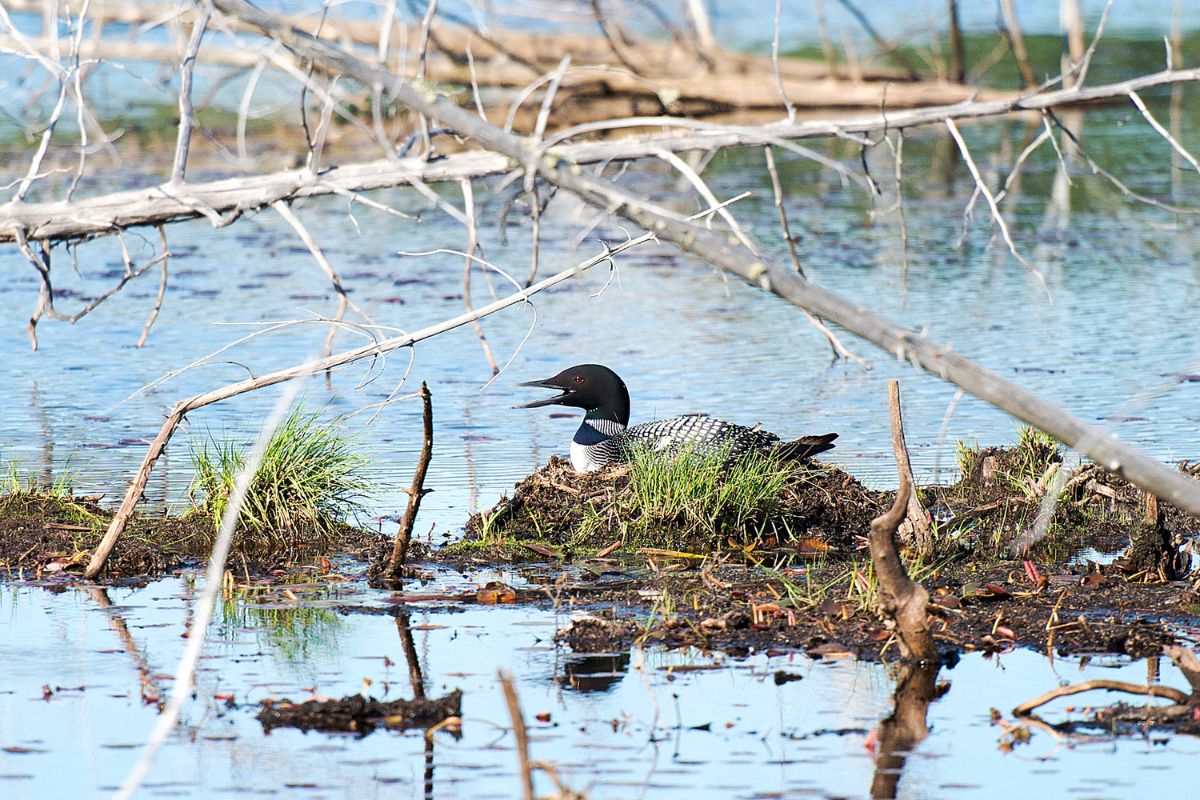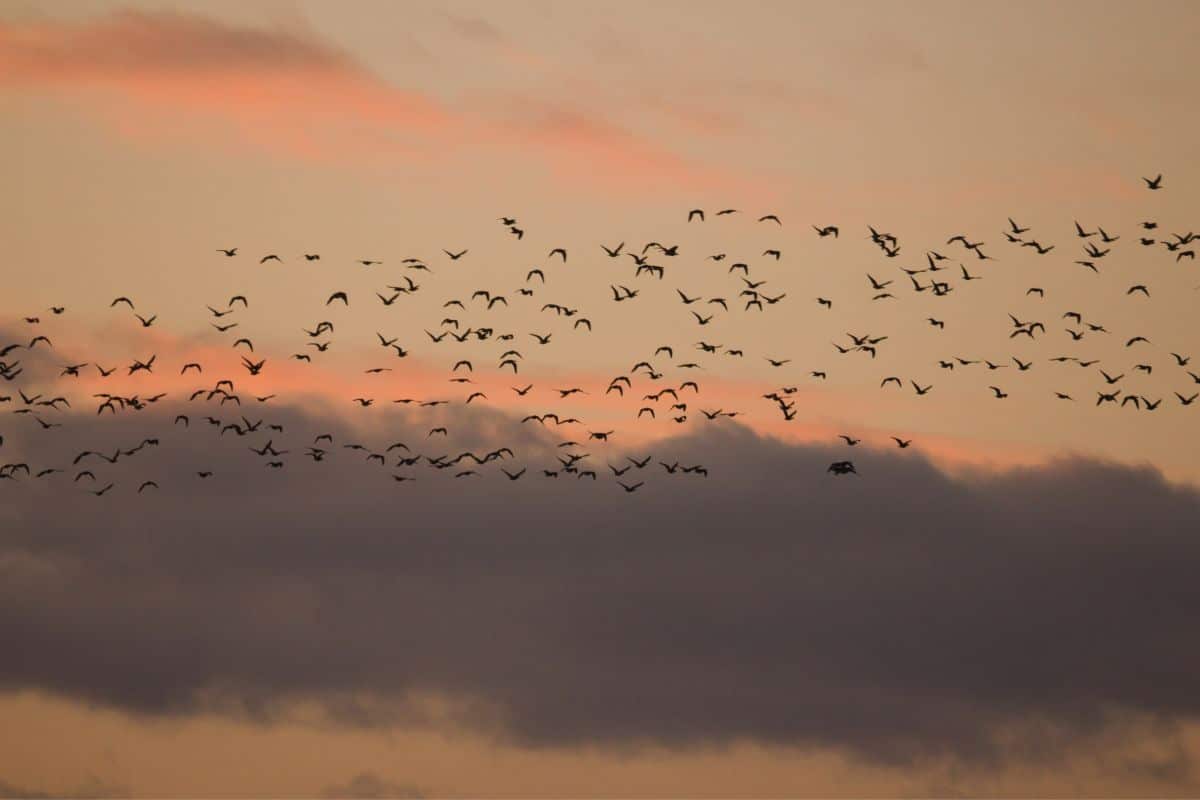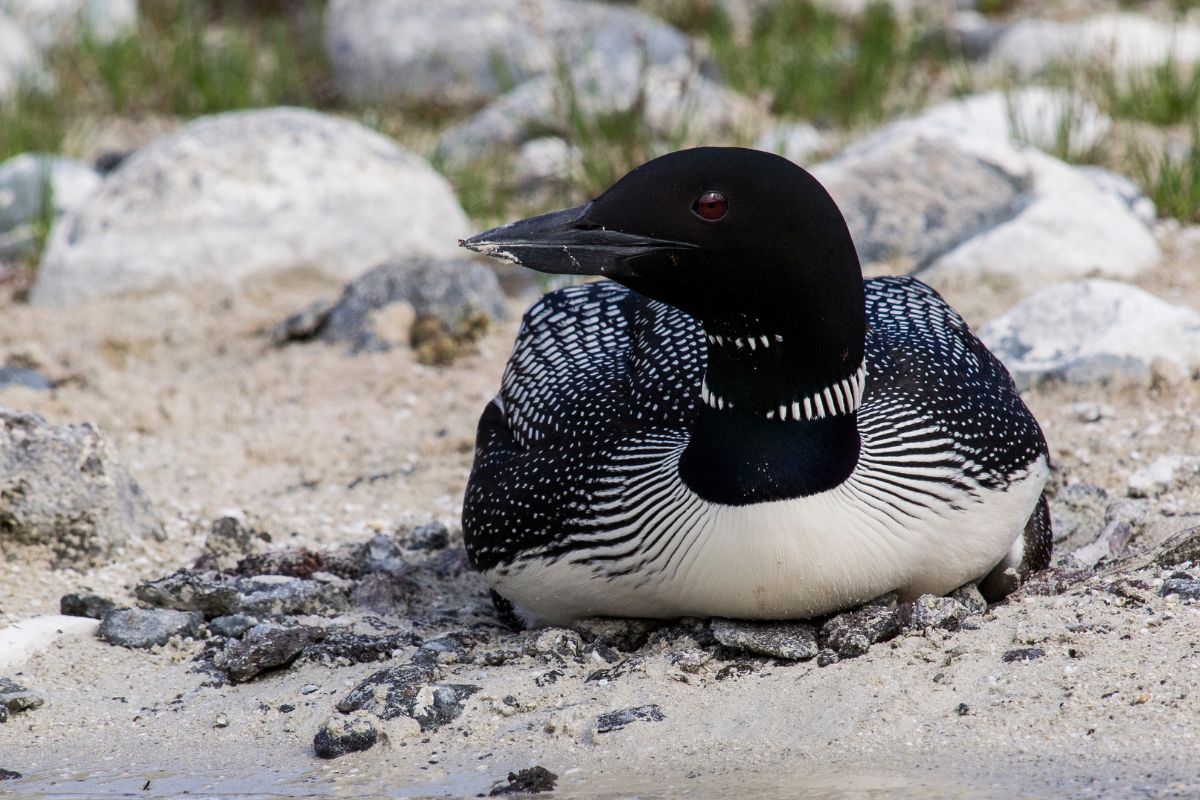Loons, like many (though not all) flying birds, are migratory birds. Migratory birds spend roughly half the year in one place and go somewhere warmer in the winter.

Loons spend their summers in the northern part of the United States and all of Canada. In the wintertime, they head to warmer locations to find food.
Contents
Where Do Loons Go for Winter?
Different bird species migrate to different places around the world. The longest-migrating bird is the Arctic Tern, which migrates all the way from the North Pole to the South Pole. However, loons are not such long-distance fliers.
In the winter, loons head to warmer waters along the coasts. As water-living animals, loons do not want to stay on dry land but can’t stay on frozen-over lakes either.
So, loons migrate to shores along the coast of the United States and Canada. Loons travel to the Atlantic and Pacific Oceans, along with the Gulf of Mexico.
Loon Migration by Location
Loons in the Midwest, Northern Central United States, and Eastern Canada migrate all the way down to the Atlantic Ocean shores of Florida and the Gulf of Mexico.
Loons that spend the summer in Maine lakes and other North Eastern portions of the U.S. usually migrate a very short distance to their closest eastern coasts.
Western Canadian loons and loons from the Northwestern region of the United States spend their winters along the pacific coast, from California all the way down to the Yucatán Peninsula.
Loon Migration Timeline
Loons usually fly north in spring, around April and early May, and usually fly south in October and early November.
The Lives of Loons

Loons tend to lay eggs and breed in the summer months. They build their nests close to shores because they prefer water. Loon nests are commonly spotted on lake and river islands, where they will have plenty of privacy and access to water.
A loon’s primary source of nutrients is fish. It is rare to see a loon eat a fish, as they usually consume their prey while underwater. An adult loon raising chicks will eat about two pounds of fish per day in the summer months. Common loons tend to live for 20-30, which is long for a bird.
Loon Reproduction
Loons typically reproduce for the first time at two or three years old. They do not mate for life and often switch partners when they switch territories. When a pair of loons lay their eggs depends on where the loons have built their nest and that year’s climate, but most eggs take about 27 days to hatch.
Female loons lay only one or two eggs at a time, usually a few days apart. If neither of the eggs hatches, the mating pair may try again that same summer. Loons will usually attempt to hatch a set of eggs no more than three times per mating season.
After the baby loons are born, the parent loons will care for their young. Loon couples tend to care for their babies for about 12 weeks, longer than most other bird species.
Because the care period for their young is so long, loons will not have another set of babies if one of their sets of eggs hatches.
All of these factors, combined with the loss of chicks, habitat, and other regular risks, mean that a mating pair of loons typically only have one baby every two years. On average, it takes four years for a pair of loons to replace themselves in the population.
Why Do Loons Migrate?

It seems evident to anyone who has spent a winter up north why a bird might fly south. It’s cold and windy, and there aren’t many insects and fish for birds to eat. But you might wonder why a bird would choose to fly back north after winter is up. Why bother flying north at all? There are a few reasons that some birds decide to migrate.
Competition
While it’s true there are more insects and plants in the south, it is also true there are also more birds to compete with. Many different bird species head north to get an advantage in finding food.
Spring Bears Food
The true spring that occurs in more northern locations means extra food all at once. Every spring, insects reproduce, plants release seeds, and things begin to bloom. This rapid influx of available food is attractive to many birds. These birds follow spring north, collecting food from the best possible places until they land in their summer nesting location.
Daylight
In the winter, northern areas of the Northern Hemisphere tend to get more light than locations closer to the equator. This extra daylight provides extra hunting time for parents to gather or hunt food for their young.
The Evolution of Migration

Whether migratory birds originally started heading north to get food or began moving south to escape the cold is not fully understood. Ironically, it is a chicken or egg situation, and it isn’t apparent to scientists which came first.
However, most scientists believe that warm-weather birds gradually began leaving their southern homes to find more food during summer. These birds found that the lack of other migrating birds created an excess of food that didn’t exist further south.
In most cases of evolution, scientists would resolve the debate by looking at fossil records, but most birds have hollow bones that fossilize poorly. Though there is more research to be done, it is possible we will never know if birds moved north for food or south for warmth.
Fun Facts About Loons
- They are clumsy: Loons are remarkably clumsy on land and not at all adept at walking. Their legs are pushed far back on their bodies, making it difficult for them to shuffle more than a few feet.
- Loons know people: Loons can recognize and identify individual human faces. Some people have even made friends with the loons on their lakes.
- They have solid bones: Most birds have hollow bones, which help them stay light and conserve energy while flying. Loons have solid bones. These solid bones make loons less buoyant, which allows them to dive deeper and save energy while hunting underwater.
Frequently Asked Questions About Loons
Do you still have questions about loons? Here are answers to some of the commonly asked questions about loons.
Do loons return to the same lake each year?
Loons will return to the same lake, island, or river each year unless they are kicked out by other loons, which is relatively common.
Are loons aggressive?
Despite their soothing call and peaceful appearance, loons are remarkably aggressive. Loons have been known to attack eagles, geese, and other birds to make a claim on their territory.
Are loons endangered?
Loons were on the endangered species list until 2007, but they are no longer considered endangered. They have made strides in repopulating the places they once lived and have recently returned to New England in promising numbers.
Where do loons go at night?
Loons are not nocturnal and spend their days away. They tuck their heads under one of their wings at night and sleep while floating peacefully in the water.
